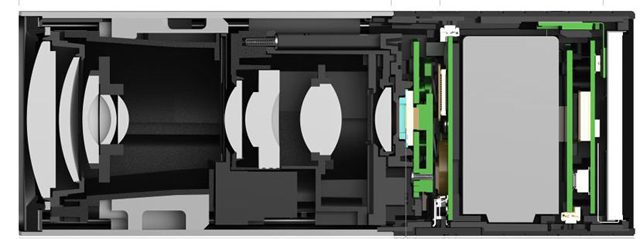The very first light fields were captured at Stanford University years ago. The most advanced light field research required a roomful of cameras tethered to a supercomputer.
Today, Lytro completes the job of taking light fields out of the research lab and making them available for everyone, in the form of the world’s first Lytro Light Field Camera.
Today, Lytro completes the job of taking light fields out of the research lab and making them available for everyone, in the form of the world’s first Lytro Light Field Camera.
Light field is the amount of light traveling in every direction through every point in space. Conventional cameras cannot record the light field. Recording light fields requires an entirely new kind of sensor called a light field sensor.
This sensor captures the color, intensity and vector direction of the rays of light. This directional information is completely lost with traditional camera sensors, which simply add up all the light rays and record them as a single amount of light.
This sensor captures the color, intensity and vector direction of the rays of light. This directional information is completely lost with traditional camera sensors, which simply add up all the light rays and record them as a single amount of light.
With the Lytro light field camera, you can continuously re-adjust an image to focus on the foreground, middle or background merely by clicking around the image. This also means it’s nearly possible to take out-of-focus, Just aim and shoot, focus later. Lytro calls these “living pictures”.
Core of the Lytro camera consists of the light-field sensor (hardware) and light-field engine (software). The sensor which looks flat square and like a fly’s eye that helps to capture all the light in every direction. A conventional photo focuses on one plane of that cube. A light field camera captures the whole thing.
Instead of megapixels, Lytro measures the sensor’s power in terms of how many millions of rays of light it captures. Like 11 million light rays or 11 megarays.
Camera allows both the picture taker and the viewer to focus pictures after they’re snapped, shift their perspective of the scene, and even switch seamlessly between 2D and 3D views.
Lytro, Inc. is a light field camera startup company founded in 2006 by Ren Ng, a light-field photography researcher at Stanford University. The company’s first camera went on sale October 19, 2011 in 8 GB (399 USD) and 16 GB (499 USD) versions, and shipped in February 2012.
The camera’s makers are a Silicon Valley start-up that secured $50 million in funding.The idea isn’t new but early ‘plenoptic’ or ‘light field’ cameras were room-sized lens arrays attached to high-powered computers. The Lytro is pocket-sized and could turn the world of photography upside down.
Light field cameras offer astonishing capabilities. With these amazing capabilities, pictures become immersive, interactive visual stories that were never before possible – they become living pictures.
Source – https://www.lytro.com

